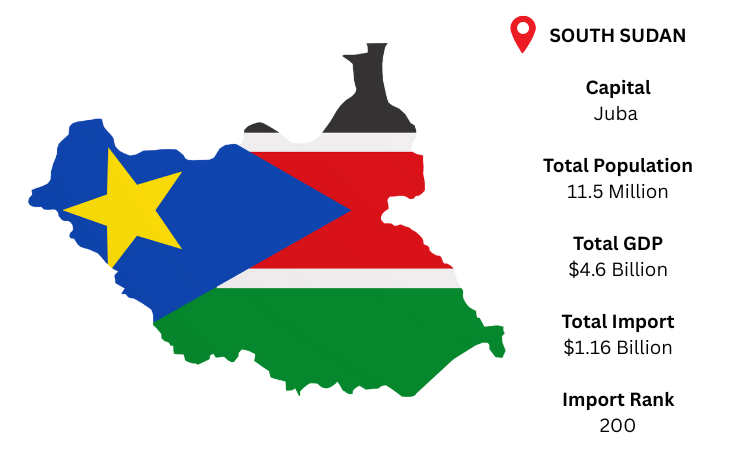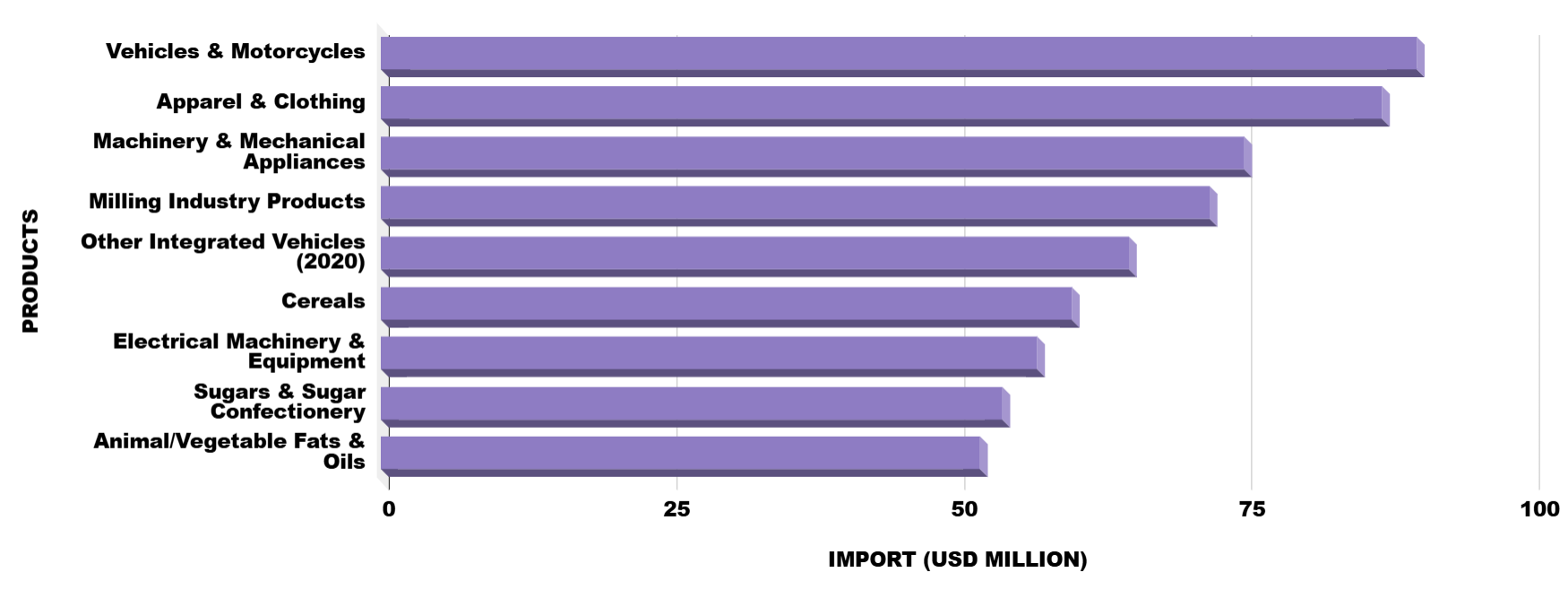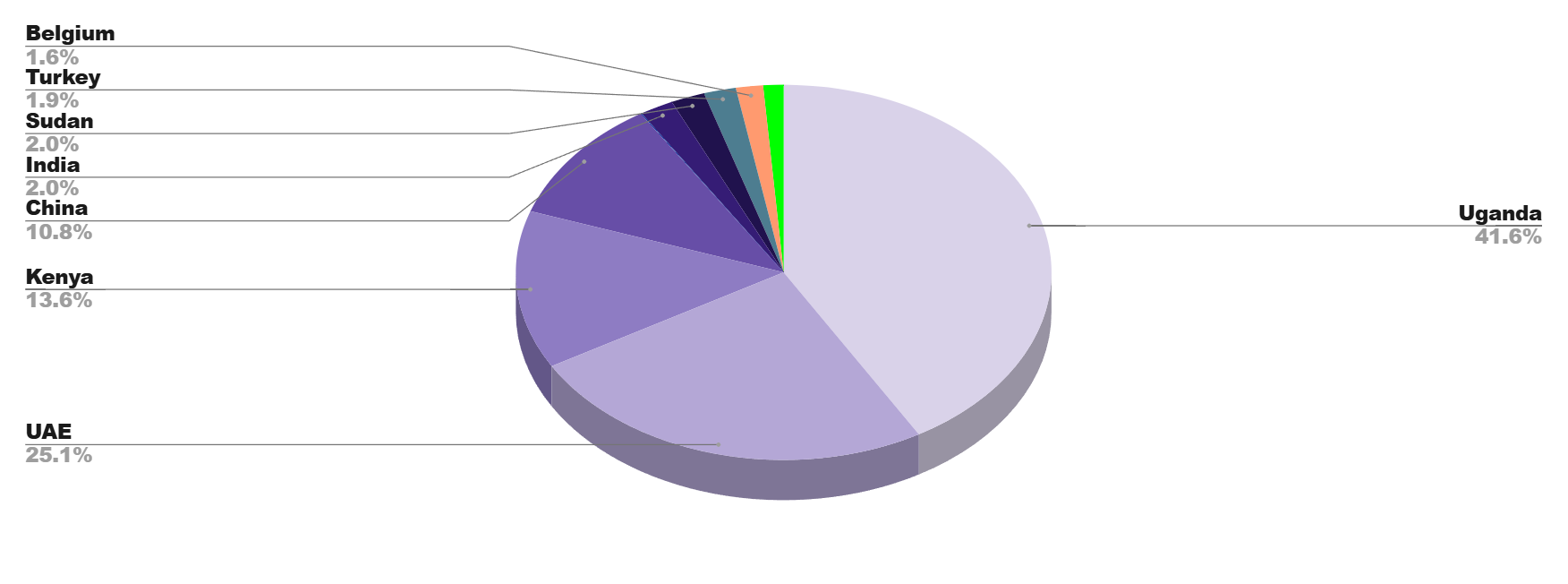South Sudan is a young, emerging nation reliant on imports to meet basic consumer and industrial needs. Juba is the capital, and the economy is dependent on agriculture and oil. As per South Sudan import data, with a population of about 11.5 million, GDP of roughly USD 4.6 billion, and annual imports around USD 1.16 billion, the country runs a trade deficit while sourcing mainly food, fuel, machinery, and vehicles.
As per South Sudan customs data, due to its limited local output and evolving demands, South Sudan is significantly dependent on imports for basic food items, clothes, machinery, cars, and electrical goods.



